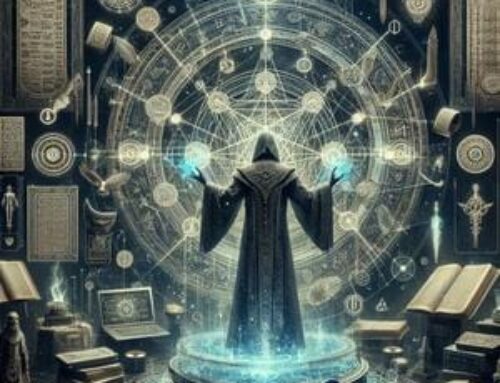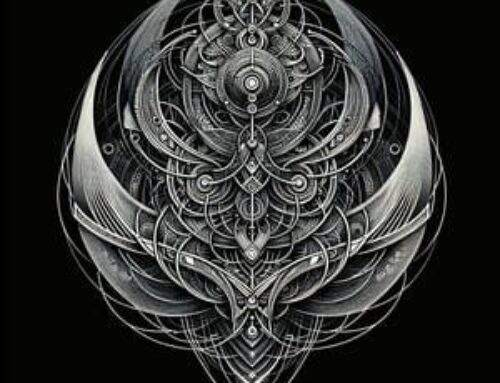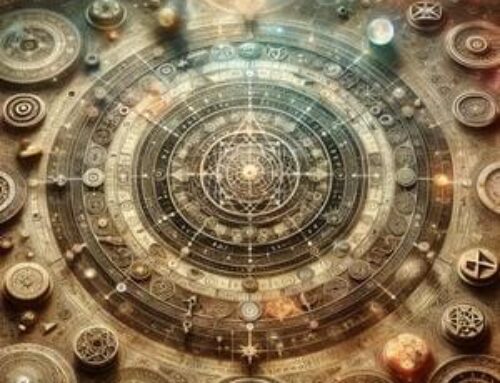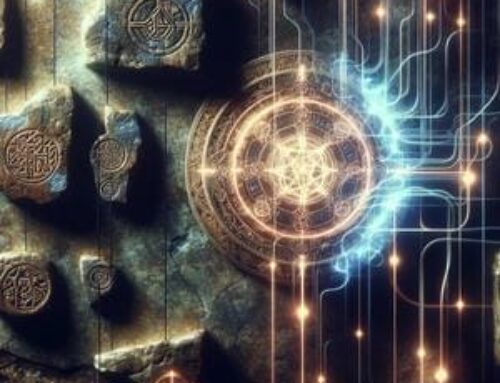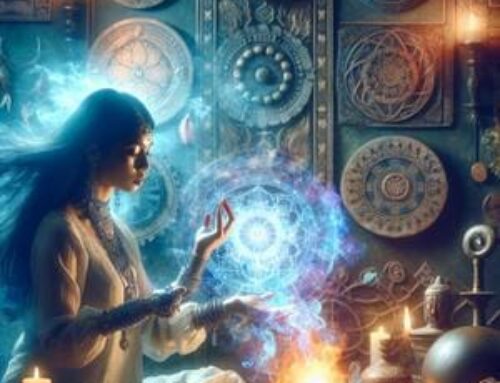Contents
Introduction
Alchemy and magic—two realms interwoven through time—have forever ensnared human curiosity. Rooted in the relentless quest for wisdom and transformation, these ancient disciplines offer not just answers but pathways to deeper existential truths. Alchemy, oft considered the forerunner of modern chemistry, extends beyond the mere metamorphosis of base metals into gold; it embodies the spiritual and philosophical transformation of the alchemist. Magic, however, deals with harnessing unseen forces to influence the natural world. Together, they form a holistic system aiming for both material and spiritual enlightenment.
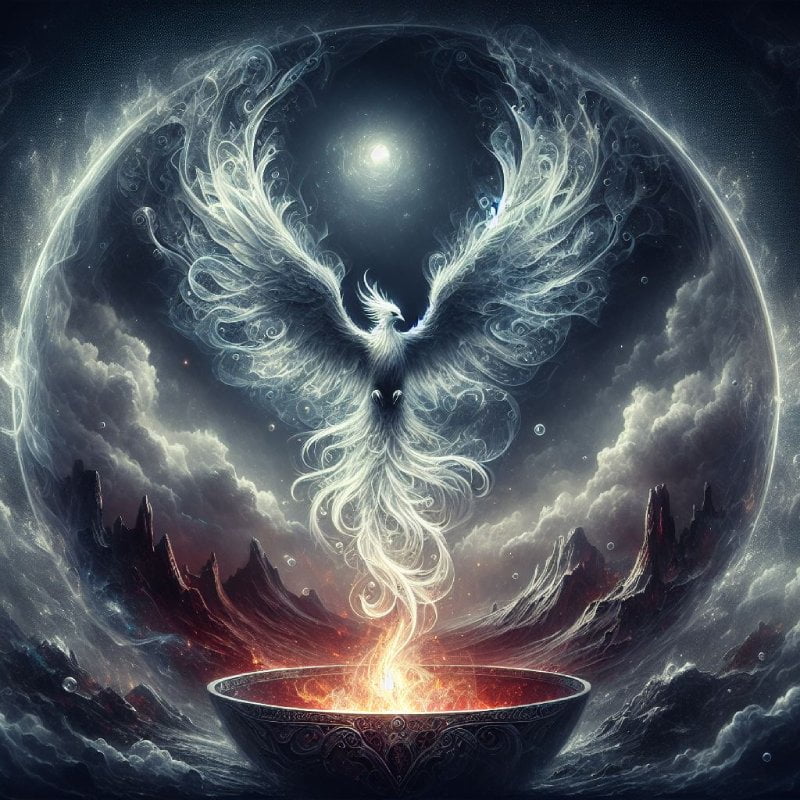
The Hermetic tradition, safeguarding the intertwined teachings of alchemy and magic, underscores the importance of inner transformation as a conduit to manipulating the external world. Mystery Schools, keeping this tradition alive, train initiates rigorously, unlocking the universe’s secrets. Not mere vaults of ancient knowledge, these schools are vibrant centers for practicing and spreading esoteric wisdom.
Understanding the Philosophical Underpinnings
Duality of Knowledge: Esoteric vs. Exoteric
In the heart of alchemy and magic lies a profound understanding of esoteric and exoteric knowledge (1). The exoteric pertains to observable practices and physical properties, accessible to the public, forming the bedrock of many scientific breakthroughs. Esoteric knowledge, however, delves into the metaphysical properties of matter, accessible solely to the initiated. This deeper understanding of cosmic forces and the universe’s spiritual nature guides practitioners towards spiritual enlightenment and transformation.
The Elusive Philosopher’s Stone and the Magnum Opus
At the core of alchemy is the elusive Philosopher’s Stone, a mythical substance believed to transmute base metals into gold and grant immortality. This quest symbolizes the alchemist’s journey toward perfection, both material and spiritual. The Great Work (Magnum Opus) encompasses various stages of purification and transformation, reflecting the alchemist’s spiritual evolution from ignorance to enlightenment.
Intertwining of Spirit and Matter
Alchemy posits a profound interconnection between spirit and matter. The transformation of substances in alchemy mirrors the alchemist’s spiritual metamorphosis. This holistic perspective extends to magic, where rituals align the practitioner with the universe’s divine forces. Through this alignment, the alchemist or magician can influence the material world, embodying the principle of “as above, so below.”
The Alchemist’s Laboratory: A Realm of Transformation
Inner and Outer Realms
The alchemical laboratory is more than a physical space—it is a metaphor for the alchemist’s inner work. While the outer lab conducts physical alchemical processes, the inner lab symbolizes the alchemist’s mind and soul. The work in the physical lab mirrors the practitioner’s inner transformation, underscoring the dual nature of alchemical work.
Alchemy in Daily Life
Alchemy teaches that life itself is a laboratory for transformation (2). Practitioners are encouraged to view daily experiences as opportunities for spiritual growth. By maintaining mindfulness and discipline, they achieve continuous inner refinement and alignment with the divine order. This approach highlights the practical application of alchemical principles in everyday life.
Rituals and Practices: The Dance of Transformation
Symbolic Alchemical Processes
Alchemy involves several symbolic processes, each representing a stage in the alchemist’s soul transformation. Key processes include calcination (breaking down of ego), dissolution (dissolving impurities), and coagulation (bringing together purified elements). These processes are deeply symbolic, mirroring the practitioner’s inner purification and enlightenment.
The Potency of Rituals
Rituals are pivotal in both alchemy and magic. Conducted in sacred spaces like alchemical labs or temples, they involve a combination of actions, prayers, meditations, and invocations. These rituals invoke divine energies, facilitating the practitioner’s connection with the spiritual realm. Precise execution of these rituals is believed to unlock the universe’s transformative powers, enabling desired outcomes.
Meditation leads to higher states of consciousness, including experience information, which can enhance our understanding of the universe and its implications for modern physics and quantum cosmology (3).
Mystical Tools and Symbols
In alchemical and magical practices, various tools and symbols aid the transformation process. The Athanor, for example, is an alchemical furnace creating the constant heat necessary for transformation. Symbols like the Philosopher’s Stone, the Phoenix, and the Ouroboros (the serpent devouring its own tail) represent different aspects of the alchemical journey and the cycle of death and rebirth (4).
Conclusion
Alchemy and magic, with their rich philosophical foundations and practical applications, offer profound paths towards transformation and enlightenment. These ancient arts teach that true transformation lies within, and mastering their principles can unlock the universe’s deepest secrets. For those eager to delve deeper, the Hermetic Academy provides a structured path of study and practice, ensuring ancient wisdom continues to enlighten and transform seekers on their spiritual journey.
FAQ- Alchemy and magic
1. What is the Philosopher’s Stone?
A: The Philosopher’s Stone, a legendary substance in alchemy, is believed to transmute base metals into gold and grant immortality. It symbolizes the ultimate goal of alchemical and spiritual transformation.
2. How are alchemy and magic connected?
A: Alchemy and magic, interconnected disciplines, aim at transformation. Alchemy focuses on transforming substances and the alchemist’s soul, while magic uses rituals and invocations to influence the natural world.
3. What is the significance of the alchemical laboratory?
A: The alchemical laboratory, both a physical and metaphorical space, represents the dual nature of alchemical practices, emphasizing the inner and outer transformation of the alchemist.
4. How can daily life be seen as an alchemical laboratory?
A: Alchemy teaches that every aspect of life offers opportunities for spiritual growth. By approaching daily experiences with mindfulness and discipline, practitioners achieve continuous inner refinement and alignment with the divine order.
5. Where can one study alchemy and magic?
A: The Hermetic Academy provides a structured path for studying alchemy and magic, offering rigorous training and initiation into the deeper mysteries of these ancient arts, ensuring the preservation and transmission of esoteric wisdom.
References
(1) Rubenstein, E. (2023). Alchemy: Secrets of Consciousness Transformation. Hermetic World, Paphos.
(2) Rubenstein, E. (2023). Magic: The Legacy of the Rosicrucians. Hermetic World, Paphos.
(3) Hankey, A. (2018). Yoga and The Physics of Higher States of Consciousness. , 335-358. https://doi.org/10.4018/978-1-5225-2788-6.CH018.
(4) Henderson, J., & Oakes, M. (1963). The Wisdom of the Serpent: The Myths of Death, Rebirth, and Resurrection. . https://doi.org/10.2307/538448.

